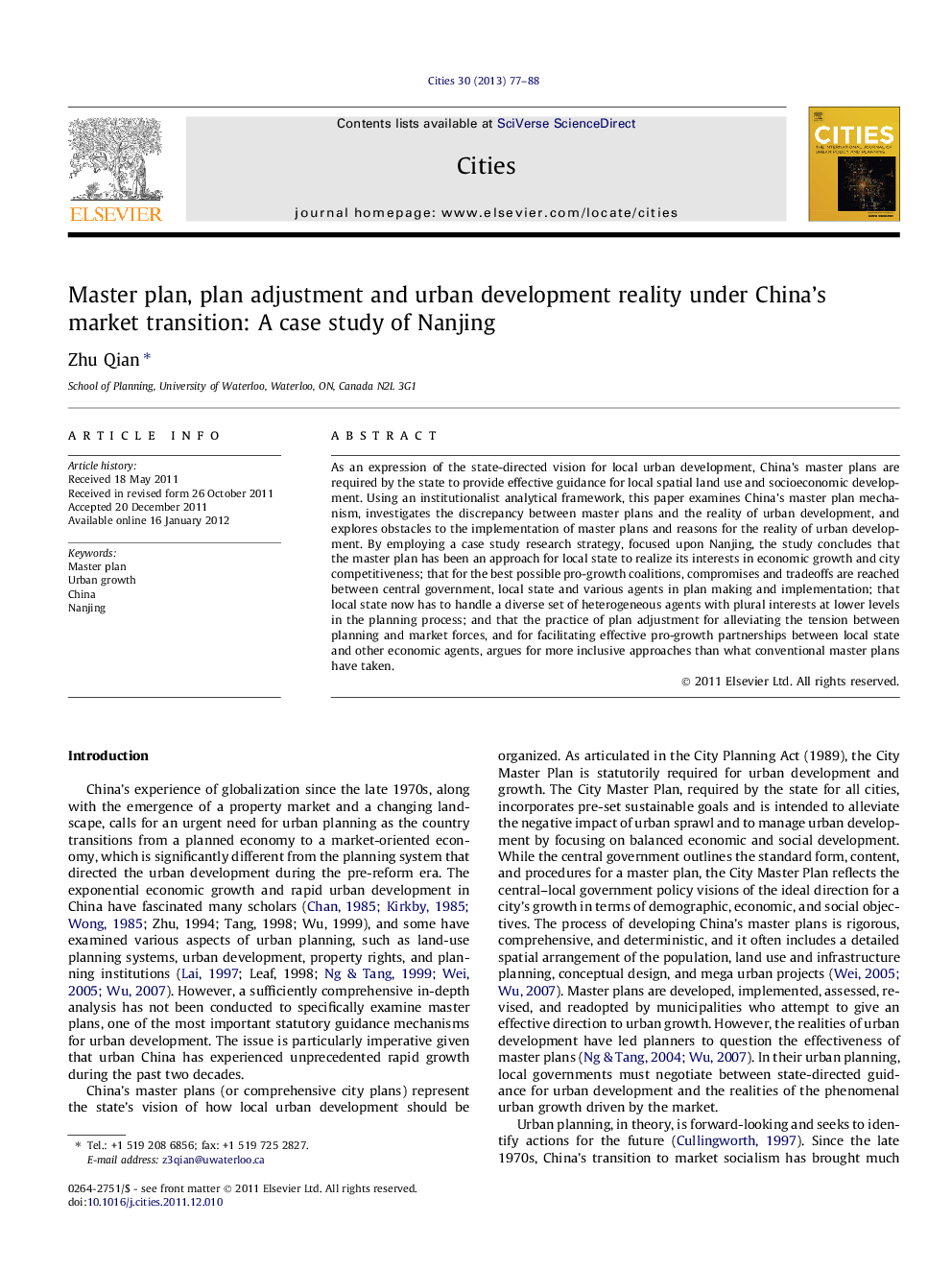| Article ID | Journal | Published Year | Pages | File Type |
|---|---|---|---|---|
| 1008579 | Cities | 2013 | 12 Pages |
As an expression of the state-directed vision for local urban development, China’s master plans are required by the state to provide effective guidance for local spatial land use and socioeconomic development. Using an institutionalist analytical framework, this paper examines China’s master plan mechanism, investigates the discrepancy between master plans and the reality of urban development, and explores obstacles to the implementation of master plans and reasons for the reality of urban development. By employing a case study research strategy, focused upon Nanjing, the study concludes that the master plan has been an approach for local state to realize its interests in economic growth and city competitiveness; that for the best possible pro-growth coalitions, compromises and tradeoffs are reached between central government, local state and various agents in plan making and implementation; that local state now has to handle a diverse set of heterogeneous agents with plural interests at lower levels in the planning process; and that the practice of plan adjustment for alleviating the tension between planning and market forces, and for facilitating effective pro-growth partnerships between local state and other economic agents, argues for more inclusive approaches than what conventional master plans have taken.
► Master plan is used by local state to realize its urban and economic growth. ► Urban development reality is in conflict with master plan because of the incompatibility of the old and reformed institutions. ► The practice of master plan mechanism argues for more inclusive approaches. ► To achieve urban policy goals, the state must handle a diverse set of heterogeneous agents at its lower level.
